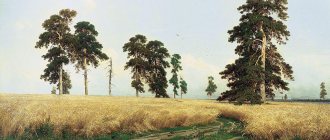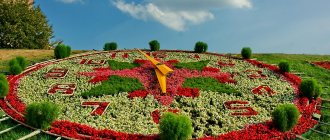Moss gardens
Moss gardens are becoming increasingly popular these days. The small size of mosses, their high decorative qualities, unpretentiousness to soil fertility, long growing season, and undemandingness to light have become the key to their successful use for creating elegant living compositions.
Mosses are used to create decorative ground cover, decorate small elements of landscape architecture, coastal zones of reservoirs, living and dead wood, stones, etc. Mosses planted in gardens for decorative purposes are designed to promote relaxation.
This is a large group of plants, united by the common name bryophytes or bryophytes, which, in terms of the number of species, ranks third in the flora of the Earth.
People have long noticed their decorative qualities. In China, back in the Tang era in the Southeastern provinces, bryophytes first began to be used in gardening.
However, their use has already reached the level of real high art in Japan.
How to care for a plant
The plant does not require any attention at all. Care is needed only after planting for the first few weeks. Agricultural technology consists only of regularly moistening the soil and removing dead pieces of the plant.
When the moss takes root, you can moisten the soil less often, and then water it only as needed.
Moss gardens in Japan
Over the centuries, local gardeners have honed their skills in using these plants to create a tranquil, spiritual environment. In many Japanese gardens, mosses have become an important element. In Japan, a moss garden was formed as a special type of landscape, where attention is focused on the texture of plants and the difference in shades of greenery.
Moss gardens began to be created in Buddhist monasteries. Of these, the most famous is the moss garden at Saihoji Monastery in the vicinity of Kyoto. This garden is included in the UNESCO World Heritage List. It is worth visiting this amazing garden while traveling in Japan.
Here, mosses with a thick carpet cover not only the stones, but also the space between the trees, stumps, tree trunks, ladders leading to the islands, almost everything around. The moss garden at Saihoji Monastery became the prototype for similar gardens in Japan, and later in other countries of the world.
But only in the twentieth century, due to the growing popularity of Japanese park art, mosses became established as ornamental plants on a global scale.
Native moss species are now widely used in private moss gardens in the United States. Bryophytes are also widely used in gardening construction in Europe, and primarily in the UK, the Netherlands, Austria, Belgium, Germany and the Scandinavian countries. Here they are successfully used to decorate rocky gardens, supporting walls, slopes and banks of small reservoirs, and create decorative ground cover in shaded, waterlogged areas.
Are you here
Japanese researchers consider one of the earliest Zen gardens to be the Saihoji Garden , converted from a landscape garden by the monk-artist Muso Kokushi (or Muso Soseki) in 1337 (According to other sources, the garden was started in 1339 and work continued for five years.).
The Saihoji moss garden, as well as the Toji-in water garden and the dry gardens of Myoshinji and Ryoanji belong to the Tenryuji school, along with the gardens of the monastery itself. The vast Saihoji Garden is located on two levels: the lower part is a moss garden and pond, and the upper part is a dry landscape (Now the dry garden has been rebuilt and has lost much of its specificity). Both pieces are highly contrasting, both in their components and their placement, and in the feeling they give to the viewer. According to legend, the upper garden was the subject of special attention of the artist. On the hillside, he first arranged a symbolic cascade with three levels, creating a grandiose composition that gives a feeling of wild and harsh nature. Powerful stones, covered with bluish, brownish-gray, rusty spots of lichens, symbolize grandiose mountains, as if squeezing a rapid and stormy stream. Here, two main forces of nature stand out and collide, personifying the positive and negative principles - yang and yin, they express the unity and struggle of cosmic forces, the continuity of movement and its constancy. Tradition associates one of the stones at the edge of the cascade with the name of the 14th century Japanese ruler Ashikaga Yoshimitsu, who visited the monastery and immersed himself in contemplation of the garden while sitting on this stone. Since then it has been called the stone of contemplation. The lower garden is a world of silence, peace, soft, all-penetrating green light penetrating through the branches of trees with small foliage and reflecting from the soft velvet of mosses that covered not only the ground, but also stones, tree trunks and islands in the pond. A road is laid through the garden, and moving along it gradually reveals, one after another, spontaneously free, as in a natural grove, compositions of tall and low, straight and curved trees, of huge rocks and small stones. The calm surface of the pond is divided by rocky islands, symbolizing ships that sail to the paradise islands. The light filtered through the foliage is absorbed by the soft emerald, dark green, brownish surface of the mosses, as if condensing in it, enriching its texture. The emotional experience of this texture of mosses, contrasting with the shiny surface of the pond, and the green light enveloping objects is the basis of the aesthetic impact of the lower Saihoji garden. Only in autumn is its exquisitely designed monochrome disrupted, when it is invaded by the sonorous blows of fiery red and deep red spots of maple foliage. The pond has an outline reminiscent of the Chinese character “xin” (“heart”), which is associated both with the artist’s desire to increase the complexity of the coastline and with the Buddhist symbolism of the meaning of the hieroglyph.
The obligatory following of the road, the “forced” route through the garden, guarantees not only the safety of carefully protected mosses, but mainly the accuracy of the impression of each component of the garden and each composition, designed for a specific point of view. The space of the garden seems to gradually unfold before a person and is experienced by him as he moves. Such an introduction of the temporal aspect into the figurative structure of the garden comes not only from its proximity to the architectural genre, but also to a special type of Far Eastern painting on long horizontal scrolls, implying a gradualness of perception, a narrative connected not with the plot, but with the very form of the picture, sometimes reaching several meters in length.
Saihoji Garden is also called the temple of mosses, and although stones play a significant role in its construction, it is mosses that form the basis of its expressiveness (Several dozen different varieties of mosses are collected in the garden). Mosses covering old stones, tree trunks; mosses with their ugliness and unpretentiousness; mosses are evergreen, creating a variety of surfaces - apparently, all these qualities forced the Zen monk Muso Kokushi to make moss the “main character” of his garden, to comprehend and reveal its various aesthetic possibilities.
Features of mosses
Mosses are closely related to algae; they are very demanding of moisture and prefer shade. In moist, shady places they grow anywhere and everywhere.
Mosses have no roots. Instead of roots, there are thread-like outgrowths that, like real roots, absorb water. Mosses reproduce during rainy weather or heavy dew. The next year, as a result of fertilization, a box with spores is formed at the top of the moss stalk, which is covered with a pointed fleecy cap. From a ripe capsule, when the cap falls off, spores spill out and germinate if they fall on moist soil.
A thin green thread is formed from the sprouted spore. The thread begins to branch, buds form on it, from which moss stems with leaves then grow. In its structure, the thin green thread growing from a moss spore is similar to filamentous green algae, which indicates the relationship between algae and mosses.
The most extensive class is represented by phyllophytic mosses, which has 700 genera, including about 14,500 species. The most common leafy mosses are Sphagnidae (or true) mosses, Andreaeidae mosses, Bryales green mosses and Bryidae mosses.
In nature, sphagnum mosses are permanent inhabitants of swamps in the temperate and cold zones of the northern and southern hemispheres. What is most typical for them is the growth of moss turf and the formation of continuous and dense cushions - moss carpets. They are also called white mosses because most sphagnum mosses are whitish-green in color. The stems of sphagnum mosses are quite large in size, branched and covered with clearly visible small leaves. That is why sphagnum appears white, because each leaf consists of two types of cells. Some cells are green - they contain chlorophyll; while others are filled with air, which is why they appear transparent or white. The outside of the sphagnum stems is also covered with transparent cells. These cells, filled with air, are able to greedily absorb water and retain it for a very long time. Sphagnum, thanks to these cells, absorbs 20-25 times its weight in water.
Sphagnum grows at the top of the stem, growing by 3 cm annually, while the lower ends of the stems gradually die off. Dead parts of sphagnum slowly decompose with little access to oxygen and turn into peat.
Green mosses are found in tundras, coniferous forests, mountains and meadows. You can also find them in swamps. A typical representative of this class is cuckoo flax Polytrichum. The dioecious plant cuckoo flax can be found on damp forest edges. Unlike sphagnum, the thin stems of cuckoo flax do not branch, but are lined with small narrow leaves. The apical leaves of male plants differ from the rest sitting on the stem in size and shape, and have a brownish-red color. In summer, female specimens of cuckoo flax are distinguished by the presence of thin, long legs that carry bolls. These mosses, settling in meadows or gardens, can acidify the soil, impairing its aeration.
Andreev mosses are small in size and have forked branching, rigid, erect stems of red-brown color.
Brie mosses are especially decorative in their shape and appearance , growing up to 30 cm in height.
In our latitudes, the most common mosses are sphagnum mosses, cuckoo flax and some others.
These local mosses can be placed in your garden after creating conditions for their survival. In every garden there are very shady places under the trees, where flowers and grass grow poorly, where you cannot create a flower bed, a bed, or a lawn. But mosses are ideal for such a place. You just need to provide the necessary moisture and acidic composition of the soil.
Mosses can be collected in the forest and planted in your area.
If you plan to plant mosses under coniferous trees in your garden, it is better to select material for growing mosses in a coniferous forest; accordingly, mosses under deciduous trees should also be looked for in the forest under deciduous ones.
It is better to look for mosses whose growing conditions are closest to those in the garden. If you want a moss bed in an open area, give preference to meadow mosses, which grow in similar soils.
The moss that you have chosen in the forest must be collected along with the layer of soil on which it grows. Areas for planting moss are being prepared in the garden. Local soil must be selected, and the resulting openings and depressions must be filled with soil brought from the forest. Then this soil should be well moistened,
Wet the moss pad and gently press it into the selected area, firmly enough to remove any air pockets. If the planting site is chosen on a slope, then to prevent sliding, you can fix the moss with sticks or nails.
Types of moss for garden design
Despite the fact that there are thousands of varieties of moss, only a small part is used to decorate the garden. The most common among them:
Leucobrium. It is distinguished by its bluish, light green color and velvety turf. Does well in the shade, but can survive in the sun. Occasionally you can find yellow or brown juniper leucobrium.
Subulate phlox. Strictly speaking, this perennial is not a bryophyte, but due to its short stature and density it resembles flowering moss.
Creepers for the garden: 135 photos of application options, tips for care and use in landscape designTomato business: how to choose the right seeds that can produce a good harvest in a greenhouse
Flowers for a flower bed that bloom all summer: diagrams and ideas for choosing low-growing and perennial flowers for the garden and plot (125 photos)
It is not surprising that its second name is moss carnation. The birthplace of the flower is North America. It was from there that this low-growing plant of pink, lilac, white, and purple colors moved to our region.
Kukushkin flax (Polytrichum). A compact, elongated columnar plant up to 40 cm high. Prefers marshy, acidified soil and shade.
Moss care
In order for the moss to take root, it is important to keep it moist for at least 3 weeks. If you managed to implant the moss, further colonization will take place more intensively in terms of time. New moss growth may appear as a thin film of green algae growing on the surface of the soil. It may take approximately 5 weeks for new pads to form.
Long-term drought and inappropriate soil reaction can dry out established moss. In case of prolonged drought, it is necessary to water the moss. If the moss does not like the soil, you need to bring from the forest the one on the surface of which it is accustomed to living. Replace damaged areas with new ones.
What is decorative moss
This plant is a special type of site decoration that adds elements of magic and tranquility to the familiar landscape.
Looking at the photo of decorative moss, you can clearly see how advantageous it looks on lawns and in alpine hills, as small clearings, and it also beautifully decorates flowerpots, stones, walls and roofs. This is a very hardy plant.Moss grows quickly, prevents weeds from multiplying, and also inhibits the development of soil erosion. Even if you take a walk in a moss meadow, the plant stems easily recover after watering.
Moss in garden design
An appropriate decoration for your moss garden can be brought in stumps and driftwood, overgrown with moss and lichens. You can make beautiful compositions from driftwood, complementing them with other plants.
Well, of course, stones will be an indispensable attribute of this garden.
A rock garden will be a wonderful thematic addition to a lawn or moss flower beds, and mosses and lichens on the stones will give such a garden a special charm. If you plan to place a stone already covered with moss in the garden, then the conditions in the garden should be similar to those in which the moss-covered stone was previously located.
The stones you bring may not be mossy at all. The snags and stumps you like may also not have moss on the surface. You can wait for mosses to settle on stones and snags, but this may not happen.
If you don’t want to wait a long time, you can plant moss on stones, snags and stumps yourself.
If you plan to cover stones with moss, then it is better to collect mosses from the stones. It is easier for mosses and lichens to take root on stones when the surface of the stone is not too smooth, then the plants will have something to “catch onto.”
To plant moss on a wooden surface, it is better to take it from the tree.
The prepared moss pieces should be broken into small pieces and mixed with either unflavored yogurt, kefir, or egg white. You can mix it all in a blender.
The resulting mixture is applied to stones and wood.
The growth rate of moss depends on its type, but after about a year the moss pad will reach adult size.
In the moss garden you can plant low-growing conifers - shade-tolerant cypress, juniper, boxwood, thuja.
If you want to maintain the Japanese style in the presence of mosses, then you should plant Japanese euonymus, azalea (rhododendron), moisture-loving bulbous irises, chrysanthemums and lotuses. Typically, a Japanese-style garden has a pond, around which flat stones are laid out and everything is decorated with mosses.
Secrets and rules of growing moss
If you are an experienced florist and have already learned how to grow flowers, care for lawns and harvest a rich fruit harvest in the fall, you can safely start growing moss and decorate your garden decor or fence with it.
Beginning designers can also grow mosses or lichens on their own, having learned the basics of caring for unusual representatives of the flora.
Where is the best place to place a moss garden?
As you know, moss loves partial shade and a large amount of moisture, so before purchasing decorative species in a store or collecting them yourself in the forest, make sure that your country estate has an area that meets these requirements.
For example, this could be a small area of coniferous or mixed forest in which pine, spruce, larch or fir trees grow.
As a rule, the branches of coniferous trees create the necessary partial shade, and the soil contains a sufficient amount of water. If a light pine grove is located on dry sandy soil, it is not suitable for growing mosses
The north side of a gazebo or building, where the sun shines early in the morning or late in the evening, is also suitable for creating a velvet carpet. A small amount of ultraviolet light can be beneficial - under the sun's rays, the peculiar leaves change color and acquire many interesting shades.
An excellent place for the first planting of moss is garden soil. From small fragments of mossy turf you can assemble an amazingly beautiful lawn, shimmering in different colors.
Moss pads can be planted both under tree canopies and in open but shaded areas - they form beautiful lawns that are unique in appearance
If there is a wetland left at your dacha by chance, moss can become the main decorative element for decorating it. A small pond with aquatic plants is placed in the center of the site, and the banks of the reservoir and the surrounding area are decorated with the help of various types of bryophytes and lichens.
A scattering of moss-covered stones, a mossy old cracked jug, and a decorative boat with its nose buried in the soft mossy shore fit harmoniously into such an extraordinary landscape.
Shade and moisture are not the only conditions for the successful growth of moss. Experienced florists recommend first studying the acidity of the soil. Ideally, the pH value should be between 5 and 6.5 units.
Preparation of plant material
So, we have found a site for the experiment, all that remains is to purchase the plant itself. We will not engage in growing moss with spores, but will immediately find adult plants - at least in order to immediately see the result. We have two available options:
- buy several decorative types at a flower shop;
- go into the forest and get samples yourself.
The first option is good because it will be possible to purchase species of different colors and growth characteristics. However, there is no certainty that they will quickly take root on your site, so be sure to ask the seller where and under what conditions the proposed specimens were grown. Purchased moss is fed with fertilizers and treated against diseases in order to better settle in after the move.
Plants from the nearest forest will most likely quickly get used to their new place of residence if it is similar to their previous place of growth. Where can you find moss in its natural habitat? First of all, in the nearest coniferous forest.
Select the types that you will use: if you decide to decorate a stone, remove the pads from the stones; tree moss will decorate tree trunks, and a green carpet covering the soil will be useful for decorating alpine slides and lawns
Moss thickets can also be found in the city. Visit old parks and squares, ancient architectural monuments with high stone fences, overgrown ponds - somewhere you are sure to stumble upon a thick green carpet.
Try to find as many different species as possible, differing in height, shade and growing conditions - by experimenting with them, choose the most resistant plants suitable for your site
Choose mature, healthy specimens that are rich in color and thick. Do not pull up plants or cut off just the tops. The correct thing to do would be to dig up the pad from all sides and carefully separate it from the base.
Recent Entries
Lilac perennials that are beautiful, compact and do not crowd out other plants Why when buying seedlings you should not take the sellers’ word for it and how to determine the age of the plant using 3 signs Tomato seedlings have turned purple or whitish: why the color has changed and how to save the plants
Be careful not to damage the decorative top and bottom growths. Carefully place the collected pads (pieces of mossy turf) into a basket with a damp piece of cloth at the bottom. After filling the basket, be sure to cover the samples so that they are not exposed to direct sunlight and the moisture does not evaporate ahead of time.
The nuances of proper planting of moss
Let's start with the fact that moss planted in the fall takes root much better. You can try spring planting, and then analyze the difference in the results obtained. Perhaps your conditions are ideal for spring work.
It is better to prepare the filler soil in advance. Make a nutrient substrate: mix chernozem and peat in equal parts, add a small amount of clay and expanded clay. Peat and expanded clay will help retain moisture during dry periods.
If moss is found in a forest or on the shore of a lake, take the soil from the old place of growth - it will be ideal for adaptation to the new territory
Next we perform the following steps:
- We take a bucket, basin or other convenient container, fill it with clean (preferably spring) water and lay the collected or purchased mossy turf in layers to replenish it with moisture before planting.
- If the place chosen for planting has become covered with leaves or overgrown with weeds during your absence, remove everything unnecessary so that you are left with a clean, “bare” patch free from thickets.
- We simply loosen the soil that matches its characteristics to a depth of several centimeters (up to 5 cm, no more), otherwise we dig a lot of mini-holes and fill them with pre-prepared substrate or soil brought from the forest.
- We plant moss pads according to the design thought up in advance - randomly, in stripes, in a checkerboard pattern. You can use pieces of the same color to assemble a single-color rug, or you can use multi-colored fragments to form patterns and ornaments.
- For subsequent growth and renewal, it is recommended to leave small intervals between planted islands.
- We make sure that the pieces of turf fit tightly to the soil, leaving no air gap. However, you shouldn’t press the plants too hard either.
- After planting, a fresh lawn must be watered, and subsequently ensure that the humidity is at the required level.
As you can see, the planting rules are quite simple. Let's look at a few more features.
When planting moss on an alpine hill, additional initial fixation will be required so that pieces of turf do not fall down. To secure them to the slope, we simply stick thin sticks (toothpicks will do) or pieces of wire. Later, when the moss grows in, they can be removed
On old stumps, only those specimens that were removed from a similar surface - rotting wood - will nest well.
On the contrary, if you find a beautiful, spectacular specimen in the forest on a rotten stump and want to decorate your country house composition with it, you will have to acquire an old stump, a fallen log or a piece of wood with traces of rotting
Sometimes a smooth, mossy surface looks boring and monotonous. To revive the composition, we use partner plants. Suitable for residents of coniferous forests:
- ferns;
- horsetails;
- berries (lingonberries, blueberries, strawberries, blueberries);
- low flowers (for example, violets);
- any types of lichens, including reindeer moss.
These tips are good for a mossy lawn, but now let’s look at how to grow moss on stones. To do this, you will need a mixture of pieces of moss, water and forest soil. The listed components are mixed in a blender and then applied to the surface of the stone.
At first, additional care will be required. You can cover the stone with film for several days, arranging brief ventilation from time to time.
A scattering of stones looks beautiful and laconic against the background of a green carpet, but it is better to choose ordinary gray cobblestones rather than bright granite fragments
Sometimes a mixture is prepared on a biological basis. Add a little sugar, kefir, water to the mossy turf, beat it and coat the stone with a sticky mass. The products fix the plant particles and play the role of a nutrient mixture.
Instead of kefir, you can use yogurt or beer, and instead of sugar, any sweet syrup. This method is used to decorate not only stones, but also stone fences, brick buildings, and wooden fences.
With good growth of moss on concrete, stone and wooden surfaces, you can create graffiti, ornaments and “living” drawings from its fragments
Moss in the garden
Moss preserves the harvest
Among the many ways to preserve crops in winter, especially in frozen rooms, is the method of storing carrots, beets, apples and other vegetables and fruits in dry moss. For this, sphagnum brought from the forest is best suited, which must be dried in advance. The apples, laid with soft moss, do not hit each other during transportation, and the weight of the moss is so insignificant that it does not increase the weight of the container.
Harvest stored in moss does not lose its aroma. Sphagnum has a bactericidal effect, so the crop does not rot. Moss absorbs excess moisture, so if there is high humidity in the room, this property of moss will protect vegetables and fruits from freezing.
Moss is very good for mulching
Moss is quite effective as a mulching material. To suppress the growth of weeds under trees and shrubs, 2-3 cm of moss mulch is enough. Moss retains moisture well, so watering the plants can be reduced.
Moss helps transport cut flowers.
In order to safely transport cut flowers on the site, place wet moss in a plastic bag. Bouquets of flowers when returning from the dacha will not fade along the way.
History of growing decorative moss
Soft lace fur was chosen as a laconic decoration of temple gardens back in the 6th century by ancient Buddhists. The monks raised landscape design with moss to the status of a special art.
Now moss is an invariable attribute of gardens and parks in Japan. Near Kyoto, on the temple grounds, the ancient Saihoji Garden grows, where you can see more than 100 species of decorative lichens and mosses.
Moss gardens photo
Add a comment
JComments
The moss at home has dried up - what to do?
Slightly dry moss is not a problem. This happens in a room with insufficient humidity or when the stabilized moss is old.
To restore vital functions, you need to increase the percentage of humidity in the room and use a special humidifier, which can be purchased in the store.











